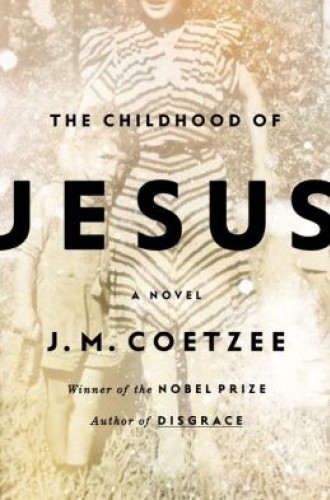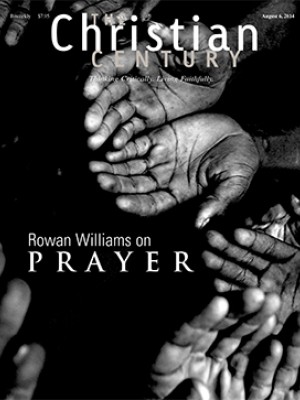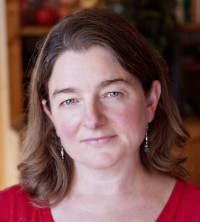The Childhood of Jesus, by J. M. Coetzee
Rumor has it that J. M. Coetzee, winner of the 2003 Nobel Prize in Literature, wanted the reader to discover the title of this book after reading it, but the conventions of book publishing would not allow that. I thought of this rumor often as I read this strange, allegorical book and wondered what difference not knowing the title would have made.
Simón, a middle-aged man, arrives in Novilla by boat with a boy named David in his care. Novilla is a vaguely utopian city or a vaguely dystopian one, depending on how you look at it. Everything is neat and orderly and the people are well cared for, but the place is also passionless. Simón and David go about constructing a new life in this world. They find a place to live, Simón finds work, and Simón attempts to find David’s mother, without any real clues to go on. He simply believes that he will know her when he sees her. He settles on a woman named Inés, a “virgin slate,” and hands David unceremoniously into her care. But he finds that he loves the boy, so after a lot of trial and error, he, Inés, and David form a sort of family.
Read our latest issue or browse back issues.
This plot is narrated so aridly that we get little feeling for the place or the characters. Yes, Coetzee’s prose is masterfully precise and spare, as many have said, but in this case, it is also airy. Instead of writing economically in order to weight words with greater emotion and meaning, he somehow manages to evacuate all feeling from the language.
The book does pose philosophical questions and appears to be an old-fashioned novel of ideas, but then it refuses to meditate on them. In one scene, Simón is in the hospital and David comes to see him. The boy is about to tell Simón of his experience at school. This part of the novel raises questions about what is real and unreal. We are compelled to wonder: Does David experience or imagine the barbed wire at this school? Are the people who send him to this school cruel or kind? Is the boy’s version of events trustworthy? And if so, according to what system of understanding?
But the narrative flow is suddenly interrupted by Simón’s boss, who says, “Before we get to that, Simón, can we discuss your move? When do you think you will be able to walk?” This leads to a pointless side conversation about where Simón will go when he gets out of the hospital. The novel repeats this technique of leading nowhere time and time again: a thousand dead ends and no way through.
David, the “extraordinary” child around whom the narration revolves, emerges as a substantial character only in the last third of the book. Until then he does not say or do anything particularly extraordinary, although much is made of his rejection of the symbolic systems of numbers and letters. These are “rules” against which the boy rebels in favor of inventing a world less bound by them, a world in which calculations are not made, where nothing adds up.
Simón tries to explain David’s way of understanding to his coworker Eugenio: “It is as if the numbers were islands floating in a great, black sea of nothingness, and he were each time [he is asked to count] being asked to close his eyes and launch across the void.” Nevertheless, David does learn to read and count, so even this piece of the boy’s extraordinariness leads nowhere except to a couple of conversations about the reality of numbers.
Simón is deeply discontented with his new life in Novilla, and he longs for yet another life. The people around him don’t understand his restlessness. They are content with things as they are. Their philosophy classes are about the existence of books and chairs. Their food is simple and unambitious. Their brothels answer the physical need for sex while eliminating any longing. Simón, however, longs and questions. Elena, a woman he meets in the “Blocks,” where he and David live, is willing to have sex with him but finds his desire puzzling. Eugenio is happy to entertain him but doesn’t understand why he needs to question anything. Simón tells Eugenio: “The life I have is not enough for me. I wish someone, some saviour, would descend from the skies and wave a magic wand . . . and say, Behold, here is an entirely new life for you. You don’t understand that kind of talk, do you?” “No,” Eugenio answers, “I can’t claim that I do.” End of conversation. Simón lives in a world where he “searches for the irony, but there is none, as there is no salt.”
Simón’s statement about a “saviour” descending from the skies raises the question of why the book is called The Childhood of Jesus. There is no Jesus figure in the book. There are very few references to the Gospels or to biblical language or stories—except perhaps the names Simón and David, but the meaning of those names is also unclear. The novel could just as well have been called The Childhood of Galileo or The Childhood of Buddha without losing any nuance.
So why bother with the word Jesus? Was Coetzee attempting to ground the narrative with weight where there is none? Was he attempting to convince the reader to do work he was not willing to do himself?
At the end of the novel, as Simón, David, and Inés are about to depart for their next go at a new life, Simón is still unimpressed with Eugenio: “He has never found it in his heart to actually like the man. He finds him prim and blinkered and self-important.” That is exactly how I feel about this novel. And I think that if I had read its title on the last page instead of the first, I would have been even more frustrated and less intrigued by this book.







